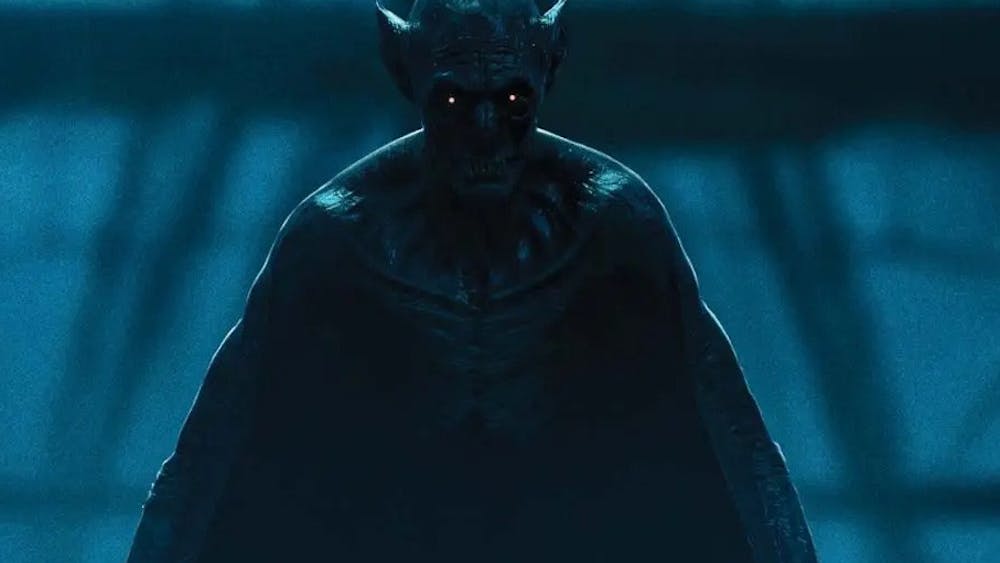Tuesday evening the IU Philharmonic Orchestra staged its last concert of the semester. As expected, it was another fine show. I wouldn't venture to call it spectacular or earth-shattering, but it definitely was a pleasant listening experience.\nChristiaan Crans conducted the first piece on the program, an overture by Gioacchino Rossini. Rossini is also known for his other overtures such as "William Tell" or "La Gazza Ladra," but the one performed this night was obscure. "La Scala di Seta" was written in 1812. Despite its obscurity, it certainly was a pleasant listening experience. \nIt was typical Rossini: light, happy, fast and with infectious melodies. But however easy listening it was, playing it was quite a different story. Some fast and tricky parts were featured on the flute, oboe and upper strings, among others. \nYet the wonderful IU musicians did not falter in their ability to tackle even the most daunting musical passages, which resulted in the proper production of a wonderful piece of music. Overall, the Rossini was a wonderful opening piece to lift the spirits of an evening audience and prepare them for the real meaty works.\nThe second piece, conducted by David Effron, was a famous work by a well-known composer: Felix Mendelssohn's Violin Concerto in E Minor of 1844. This work is probably one of the best pieces of its genre and shows Mendelssohn at his best. It was forceful yet calm, impressive yet melodic, and dark yet pleasant to listen to. A perfect balance. \nSince Mendelssohn is known for some challenging violin parts, it goes without saying that a great violinist was required to meet the challenge. The man at this concert was Diégo Tosi, the principal violinist in the French Youth Orchestra, who journeyed from Paris to play at this concert. Needless to say, he met the challenge quite well, slicing through every cadenza with the greatest of ease. The resounding applause he met with was indeed much deserved.\nEffron also conducted the final piece, a ballet. It was none other than Igor Stravinsky's "Petrushka," written originally in 1911 but revised in 1947. The orchestra underwent a sudden change at this point. All sorts of percussion toys were added, along with a piano, harp and celesta plus a number of extra wind instruments like the English horn and contrabassoon. \nThe music of Stravinsky was quite different from that of either Mendelssohn or Rossini. That difference lies chiefly in the fact that Stravinsky is considered one of the founders of "contemporary" music. \nBut unlike ensuing "contemporary" composers, Stravinsky's music actually is musical. It had melody, harmony and all the key ingredients of what makes a true piece of music. But that does not mean that this piece was ecstatically wonderful. Despite the fact that there were some beautiful passages and the instrumentation was used to good effect, the piece was severely disjointed. It was like a bad puzzle; the pieces were just not put together the right way.\nI had two other minor qualms with this piece. The first was the overabundance of percussion. Yes, percussion can add color, but this was far too much. I thought I was at a performance of the Marching 500 or something. \nThe other qualm was the use of the piano as a side instrument. A piano is okay at an orchestra if the piece is a piano concerto, but the sound of the piano is just too impressive and versatile to stick it aside and give it a small part. Granted, the piano was featured at several important places and the pianist, Matthew Mazzoni, did an excellent job, but it was just troubling to see such a wonderful instrument relegated to just a section of the orchestra.\nOverall, however, Stravinsky stands as one of the better representatives of the "contemporary" genre. Its shortcomings should not be blamed on the composer, for he does have some much nicer works than "Petrushka." It also would have been more pleasing performed as a ballet, where the music serves as a background for the dance. It was simply too long to serve only as a concert piece.\nThe Philharmonic ended this semester on the right foot and looks like it's ready to begin the next one with a good start. All in all, the musicians did a wonderful job!
The last fine performance of the semester
Get stories like this in your inbox
Subscribe





